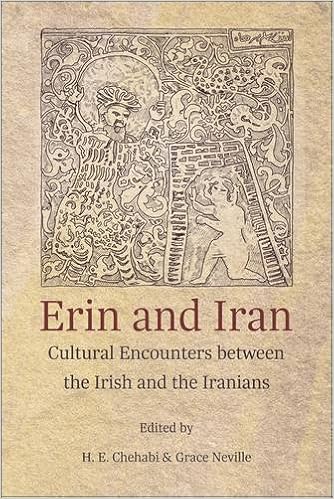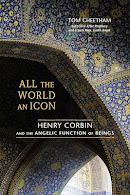"...the Imagination (or love, or sympathy, or any other sentiment) induces knowledge, and knowledge of an 'object' which is proper to it..."
Henry Corbin (1903-1978) was a scholar, philosopher and theologian. He was a champion of the transformative power of the Imagination and of the transcendent reality of the individual in a world threatened by totalitarianisms of all kinds. One of the 20th century’s most prolific scholars of Islamic mysticism, Corbin was Professor of Islam & Islamic Philosophy at the Sorbonne in Paris and at the University of Teheran. He was a major figure at the Eranos Conferences in Switzerland. He introduced the concept of the mundus imaginalis into contemporary thought. His work has provided a foundation for archetypal psychology as developed by James Hillman and influenced countless poets and artists worldwide. But Corbin’s central project was to provide a framework for understanding the unity of the religions of the Book: Judaism, Christianity and Islam. His great work Alone with the Alone: Creative Imagination in the Sufism of Ibn ‘Arabi is a classic initiatory text of visionary spirituality that transcends the tragic divisions among the three great monotheisms. Corbin’s life was devoted to the struggle to free the religious imagination from fundamentalisms of every kind. His work marks a watershed in our understanding of the religions of the West and makes a profound contribution to the study of the place of the imagination in human life.Search The Legacy of Henry Corbin: Over 800 Posts
Wednesday, December 30, 2015
On ta'wil
Esoteric Interpretations of the Qur’an: Foundations of Shia Ismaili Ta’wil
on
In current usage, ta’wil is said, and rightly, to be a spiritual exegesis that is inner, symbolic, esoteric, etc. Beneath the idea of exegesis appears that of a Guide (the exegete), and beneath the idea of exegesis we glimpse that of an exodus, of a “departure from Egypt,”, which is an exodus from metaphor and the slavery of the letter.
Henry Corbin, (Avicenna and the Visionary Recital, 29)
The ta’wil, without question, is a matter of harmonic perception, of hearing an identical sound (the same verse, the same hadith, even an entire text) on several levels simultaneously.
Henry Corbin, (Spiritual Body & Celestial Earth, 54)
Friday, December 11, 2015
A new photo for the Archive
We have this little gem from Jean Louis Gaillemin, who writes,
The fourth person is Robert Bosnak, who confirms the date as 1973.
Many thanks to Jean Louis for sending this!
Wednesday, December 9, 2015
Joyce & the Bab - A remarkable new essay by Todd Lawson
We are the first generation in the West able to read the Koran,
if we are able to read Finnegans Wake. ~ Norman O. Brown
“Joycean Modernism in a Nineteenth-Century Qur’an Commentary?:
A Comparison of the Bab’s Qayyūm Al-Asmā’ with Joyce’s Ulysses.”
by Todd Lawson
In
Erin and Iran:
Cultural Encounters between the Irish and the Iranians
edited by H. E. Chehabi and Grace Neville,
Boston & Washington D.C.:
Ilex Foundation & Center for Hellenic Studies,
Trustees of Harvard University, 2015, pp. 79–118.
On amazon HERE.
"Numerous structural, thematic, and reception parallels exist between two otherwise quite incommensurable literary works. The one is James Joyce’s well-known, controversial and vastly infuential Ulysses, generally considered the frst major work of the modernist move-ment in European literature. The second, entitled Qayyūm al-asmā’,2 is the virtually unknown, unpublished and unread yet highly distinctive and un-usual commentary on the 12th sura of the Qur’an by the Iranian prophet Seyyed Ali Mohammad Shirāzi (1819–50), better known to history as the Bab. By suggesting the existence of parallels and similarities between these two works it is not also suggested that there is any sort of connection between them or their authors, genetic, social, historical, or otherwise. But, both authors wrote at specifc and intense moments of cultural crisis and change in their respective socio-historical situations. And each was profoundly and acutely aware of the particular centrality of the literary tradition in which they wrote and the literary weight of the sources and models for their respective compositions. In the case of Joyce and Ulysses, the weight and authority of this literary history is represented by the Odyssey and Joyce’s appropriation (and simultaneous celebration and critique) of the epic tradition, exemplifed by the Odyssey. In the case of the Bab and his Qayyūm al-asmā’, the quite considerable and truly unique weight and authority of his tradition is represented by the Qur’an, on which this ostensibly exegetical work is modeled…"
Wednesday, December 2, 2015
France Culture Broadcast available online
France Culture Broadcast
Abdenour Bidar's interview with Hélène Senglard-Foreman,
the translator of my first book in French as L'Envers du Monde:
Tuesday, December 1, 2015
Subscribe to:
Posts (Atom)









